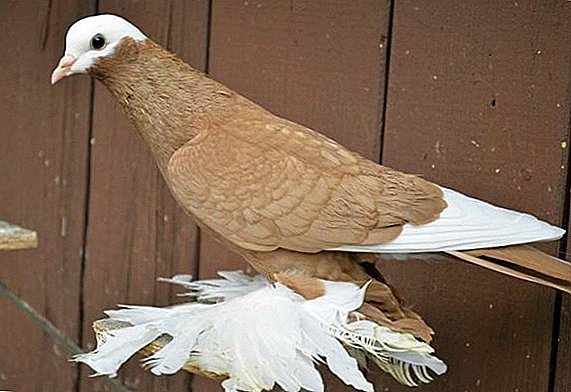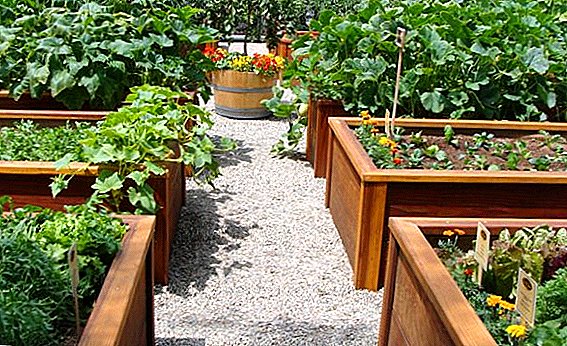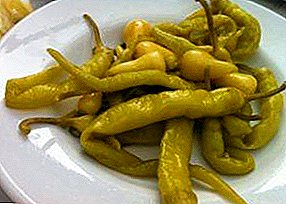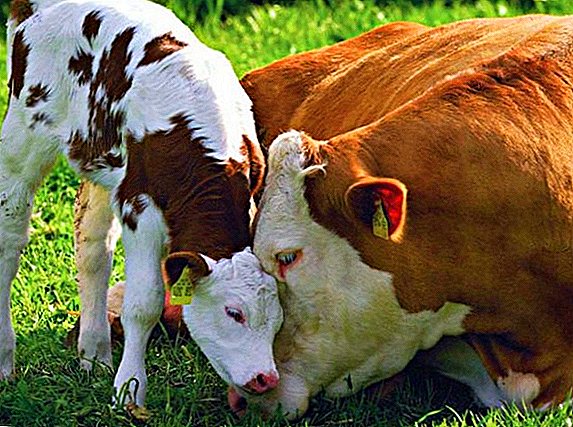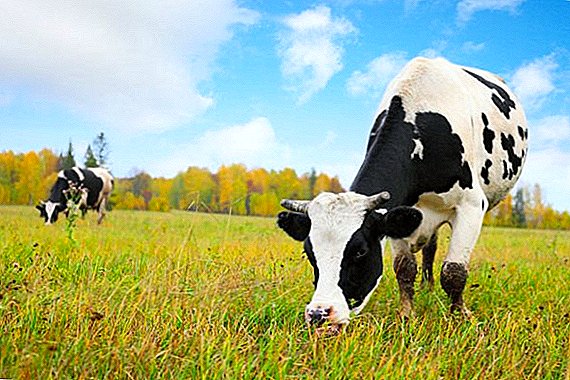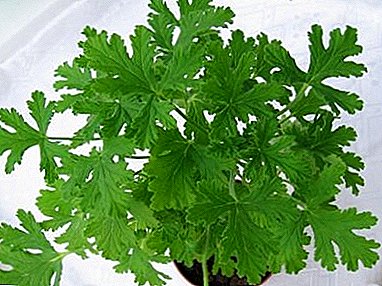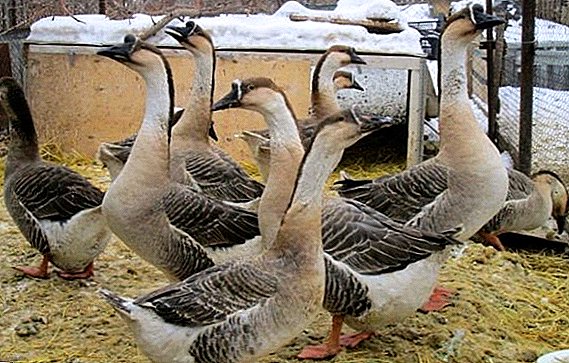 Breeding geese is not only profitable, but also enjoyable. The Kuban breed is notable for its unusual color, excellent egg production and a high percentage of incubation with a relative unpretentiousness. The content of these birds will not cause much trouble, and the bird family will delight the eye with an excellent appearance, and the stomach - with excellent eggs and meat.
Breeding geese is not only profitable, but also enjoyable. The Kuban breed is notable for its unusual color, excellent egg production and a high percentage of incubation with a relative unpretentiousness. The content of these birds will not cause much trouble, and the bird family will delight the eye with an excellent appearance, and the stomach - with excellent eggs and meat.
Breed history
Kuban geese were first bred in Kuban Agricultural Institute, therefore received such a name. Chinese and Gorky geese, which are famous for tasty meat and other qualities, became relatives of this breed.
There was also the second "wave" of breeding Kuban geese by crossing a large gray goose with a breed of vistines. However, the result was much less popular, and soon disappeared completely from the farm yards.  In the early years, “Kuban” became very popular and spread with lightning speed throughout the territory of Ukraine, Russia and Kyrgyzstan. At the moment, according to approximate estimates, the number of these representatives is about 300 thousand, and their population is constantly growing.
In the early years, “Kuban” became very popular and spread with lightning speed throughout the territory of Ukraine, Russia and Kyrgyzstan. At the moment, according to approximate estimates, the number of these representatives is about 300 thousand, and their population is constantly growing.
Did you know? The goose is able to swim from birth and he does not need "lessons from adults".
Description and Features
"Kuban" have an unusual exterior, thanks to which this breed is difficult to confuse with any other. A feature of these geese is a characteristic crook above the beak and a black stripe from the back of the head to the back.
External features
Most often there are gray or brown representatives, less often - white. Standard goose has the following external data:
- Tail. Short, small, raised up.
- Chest. Bulk, a little bit forward.
- Stomach. Small, lowered down.
- Wings. Small relative to the body, tightly pressed to the body.
- Head. Large, with a prominent bump (black or orange) above the beak.
- Eyes. Large, black. Planted shallowly.
- Beak. Black with a blunt end. Strong.
- Neck. Thin, long. It has a slight rounding.
- Shins. Yellow, massive.
- Hocks. Middle length.
- Plumage. Dense, not voluminous.

Character
These geese are gregarious. In the case of a properly constituted family (a pair of geese for 10 geese), the “Kuban” will repay not only with good offspring, but also with friendliness and sociability. These birds are rather curious and active, never sit still.
Check out the breeds of geese for home breeding: Toulouse, Kholmogory, Linda, Arzamas, Danish legart, Hungarian white, Rhine, Gorky, Tula.
Hatching instinct
Laying birds have a developed nesting instinct and are able to raise 90% of chicks from laid eggs. Even "older" females (more than 2–3 years old) are prone to carrying eggs and raising offspring. 
Productive characteristics
The Kuban goose is a breed bred to carry a large number of eggs. And the result did not disappoint the breeders. But farmers appreciate the breed not only for the fact that they carry a lot of eggs, but also for tasty meat.
Learn more about the composition, beneficial properties and culinary use of goose meat, fat, eggs.
Dynamics and live weight of goose and goose
"Kuban" refer to medium heavy type geese. Representatives grow quite quickly: at 2 months they weigh already 3 kg, and by six months the gander gains 5-6 kg, and the goose - 5-5.5 kg. Such a mass is "upper", that is, the bird does not grow anymore.
Beginning and average annual egg production
The geese start feeding at the age of 8-9 months, delighting the owner with hundreds of large eggs (weighing 150 g) per year, which is an excellent indicator in comparison with other breeds. Egg production lasts about six months. The egg has a light milky hue, a thick shell. The content is tasty, nourishing, with a large yolk. Every year the figures fall, so farmers rarely keep geese over 4 years old.
Conditions of detention
The content of these geese can be divided into summer and winter:
- In the summer, the bird does not need a specialized pen, because almost all the time the family is in the fresh air. A small wooden structure with a roof or a canopy and a small flooring (tyrsa, hay) will quite suit the bird as an overnight stay. If there is no reservoir near the farm, you should think up a mini-pond for swimming. The dimensions of the walking yard should be calculated depending on the age of the birds: young animals need 3-5 square meters. m per head, adults - 15 square meters. m
- In winter, worries become a bit more. It is necessary to build a good warm house at the rate of 1 sq. M. m per bird. The walls and the floor can be wooden, and roofing material can be used as the ceiling. It is important to build a roof so that waste water does not get inside. A litter (granulated) must be spread out on the floor, which should be dry and clean (partially cleaned once a couple of days, completely replaced once a week with general cleaning).
 It is desirable to supply the house with additional heating in order to maintain a constant temperature within + 15-20 ° C, but this breed is frost-resistant and, in principle, can do without it.
It is desirable to supply the house with additional heating in order to maintain a constant temperature within + 15-20 ° C, but this breed is frost-resistant and, in principle, can do without it.

Important! Geese tolerate cold rather well, but drafts are very dangerous for them. Birds immediately begin to get sick and even die en masse.
What to feed
Properly balanced diet is the key to the health and longevity of the bird. In no case can the geese be deprived of the necessary elements and vitamins, because this will affect not only the quality of the meat of the bird itself, but also the quality of the eggs it has laid.
Adult flock
An adult goose family is fed with grain, mixed fodder, vegetables, silage, and in summer a large amount of greens is added to the diet (at least 2 kg per day). A characteristic feature of geese is that this bird is quite fastidious and will refuse to eat low-quality food.  In order to help the goose stomach to cope with food, it is necessary to add small shell rock or coarse sand to food. The amount of feed in the summer and winter should be different. In the summer the quantity is reduced, in the winter - is increased.
In order to help the goose stomach to cope with food, it is necessary to add small shell rock or coarse sand to food. The amount of feed in the summer and winter should be different. In the summer the quantity is reduced, in the winter - is increased.
The recipe for a full daily diet (per bird):
- Wheat - 50 g
- Barley - 60 g
- Oats - 60 g
- Wheat bran - 25 g.
- Clover flour - 50 g
- Boiled potatoes - 75 g.
- Carrots - 85
- Fish or bone meal - 10 g.
- Beet - 10 g.
- Sunflower meal - 10 g.
- Yeast - 3 years
- Mel, shell rock - 4 y.
- Salt - 0.1 g
Important! Food should be around the clock. Geese belong to the species of birds that feed at night.
Goslings
- In the first few days, goslings require special care and feeding. Newborns are best fed boiled yolks. This product is perfectly absorbed, and also helps to get used to the use of solid feed.
- After 5 days of life, greens are added to the yolk.
- After 7-10 days the amount of grass should increase, because it contains many essential vitamins.
- On the 15th day, more high-calorie substances (boiled vegetables) are added, however their portion should not be more than 15% of the total daily requirement.
- After 2-3 weeks, the percentage of normal food should increase, gradually reaching the norm of adult birds.

Pros and cons of breed
This breed of geese has many advantages:
- high egg production, as well as a high percentage of incubation (90%);
- unpretentiousness (especially in the summer);
- tasty eggs and excellent meat (moderately fat, but satisfying);
- frost resistance;
- the ability to contain without a large reservoir.
Special shortcomings "Kuban" do not have. The only minus can be called a relatively small weight, but initially the bird was bred for egg-laying, and not as a meat breed.
Did you know? Some Americans use geese as helpers on cotton plantations. They perfectly weed the plot, eating weeds, without spoiling the cotton.
Video: Kuban goslings
Reviews of poultry farmers about the Kuban geese breed

It is not for nothing that Kuban geese are considered an egg-breed, however, with the right balanced nutrition, this bird will pleasantly surprise you with tasty meat. To breed this breed is economically beneficial, because the cost is minimal, and the result will meet all your expectations.


 It is desirable to supply the house with additional heating in order to maintain a constant temperature within + 15-20 ° C, but this breed is frost-resistant and, in principle, can do without it.
It is desirable to supply the house with additional heating in order to maintain a constant temperature within + 15-20 ° C, but this breed is frost-resistant and, in principle, can do without it.
